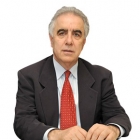Russian Foreign Affairs Minister Sergey Lavrov stated on April 8 that “our French and American so-called partners “annulled” the OSCE Minsk Group co-chairmanship, stating that they will not communicate with us in this format.” On April 14 Spokesperson of the Russian MFA Maria Zakharova stated that Russian Co-Chair of the OSCE Minsk Group Igor Khovaev “will continue to work in a new capacity, in particular, as Special Representative of the Russian Foreign Minister on normalization of relations between Azerbaijan and Armenia.”
After Lavrov’s statement, French and U.S. co-chairs of the OSCE Minsk Group separately visited Yerevan. It is not clear yet whether the OSCE Minsk Group co-chairmanship is acting or not, and we decided to remind the history of the formation of the group and its co-chairmanship.
1. Why is the group called Minsk Group?
In his book “Black Garden”, Thomas de Waal writes:
“In 1992, one organization, the forty-nine-member Conference for Security and Cooperation in Europe, the CSCE, began to take a more sustained interest. It began, in the words of one of those present, “almost as an afterthought” at the end of a meeting in Prague on 31 January 1992 at which most of the former Soviet republics were admitted to the organization. As the meeting was winding up, the British delegate pointed out that the organization had just admitted two members, Armenia and Azerbaijan, who were at war with each other and that the CSCE was obliged to do something about it. A CSCE fact-finding mission was dispatched to the region. At the organization’s next major meeting, in Helsinki on 24 March, CSCE foreign ministers resolved to hold a peace conference on Nagorny Karabakh - for which another new delegate, from Belarus, suddenly volunteered his capital, Minsk, as a venue. When no one objected, the idea of a “Minsk Conference” was born”.
However, the conference was eventually canceled because of the escalation in the fighting, so the Minsk Conference became instead the Minsk Group, with the former Italian Deputy Foreign Minister Mario Raffaelli as its first chairman. As a result, the first negotiations were actually held in Rome rather than Minsk, on June 1-5, 1992.
2. Which countries make part of the Minsk Group?
The countries are: Armenia, Azerbaijan, U.S., France, Russia, Belarus, Germany, Italy, Turkey, Sweden, Czechoslovakia (later – Finland). OSCE Troika comprising the current, former and future OSCE Chairmen-in-Office are also a permanent member on a rotation basis.
Membership to the Minsk Group of some countries was faced with stubborn diplomatic resistance. In particular, the Armenian side was against Turkey, and Baku – against France and Italy, insisting upon Great Britain’s engagement. Eventually, after long-lasting negotiations, the above mentioned list of countries was agreed upon.
3. When the institute of the Co-Chairmanship was formed?
Originally, the Minsk Group was led by the countries chairing at CSCE/OSCE.
In 1993, the Minsk Group was chaired by Italian diplomat Mario Raffaelli, followed by Swedish Jan Eliasson in 1994. According to the memoirs of Russian mediator Vladimir Kazimirov, U.S. Ambassador John Maresca was the most active at Minsk Group. “Turks were also quite active. They unequivocally supported Azerbaijan ignoring the principle of impartiality of the Minsk Group”, he recalls.
At the OSCE Budapest Summit in 1994, the institute of OSCE Minsk Group Co-Chairs was established.
The institute of the Co-Chairs as represented by the U.S., France and Russia commenced its activities from February 14, 1997.
4. Which is the Minsk Group mandate?
In his book “Peace to Karabakh”, Vladimir Kazimirov writes: “Many people perceive the Minsk Group as something given without realizing that the CSCE didn't make any decision on establishment of the Minsk Group, and the latter doesn't have any mandate... There is something like the mandate of the Minsk Conference. Later in 1995, the mandates of the Minsk Conference Co-Chairs and Personal Representative of the CSCE Chairperson-in-Office were approved, but the Minsk Group itself doesn't have a mandate. It can be spoken of only figuratively''.
The OSCE official site section Mandate for the Co-Chairmen of the Minsk Process reads:
''in accord with the Budapest Summit Decision on March 23, 1995, the Co-Chairmen will in their work be guided by the objectives of the Minsk Conference,i.e. promoting a resolution of the conflict without the use of force and in particular facilitating negotiations for a peaceful and comprehensive settlement; conduct negotiations with the parties to the conflict for the conclusion of a political agreement on the cessation of the armed conflict, and assist the Chairman-in-Office in developing a plan for the establishment, composition and operation of a multinational OSCE peace-keeping force. The Minsk Process can be considered successfully completed if the objectives are fully reached''.
The mandate itself notes the steps and actions the Co-Chairs should take to settle the conflict ''on the basis of full parity and impartiality''.
5. What proposals did the Minsk Group Co-Chairs made?
In July 1997, the sides were proposed the so-called ''package'' and later in December 1997- ''step by step'' solutions. In late 1998, the mediators came up with the proposal titled ''common state''.
In 2001, Aliyev and Kocharyan met with mediators in Key West preceded by two rounds of talks in Paris with participation of French President Jacques Chirac. According to the former Foreign Minister Vardan Oskanian,''at that time, it was spoken about including Nagorno Karabakh with part of Lachin under the sovereignty of Armenia, and Azerbaijan should have only got the right for a regular communication with Nakhichevan through the territory of Armenia''. The issue of returning the territories should have been discussed only after the final conclusion over the Karabakh status. However, as a result of domestic discussions on the prospective agreement in Azerbaijan, Heidar Aliyev went back on his word.
With the Minsk Group mediation, there were around 10 meetings of Armenian and Azerbaijani Foreign Ministers over 2004-2005. They were referred to as ''Paris Process'' which resulted in the document containing elements of both 'step by step'' and ''package'' options. The new document hinged upon the idea of holding a referendum in Karabakh.
In November 2007 the Minsk Group Co-Chairs came up with the Madrid Principles which were partially disclosed in the statement made by the Presidents of the co-chairing countries in L'Aquila in July 2009.























Comments
Dear visitors, You can place your opinion on the material using your Facebook account. Please, be polite and follow our simple rules: you are not allowed to make off - topic comments, place advertisements, use abusive and filthy language. The editorial staff reserves the right to moderate and delete comments in case of breach of the rules.